The Mid-Summer Garden Crisis
The Mid-Summer Garden Crisis
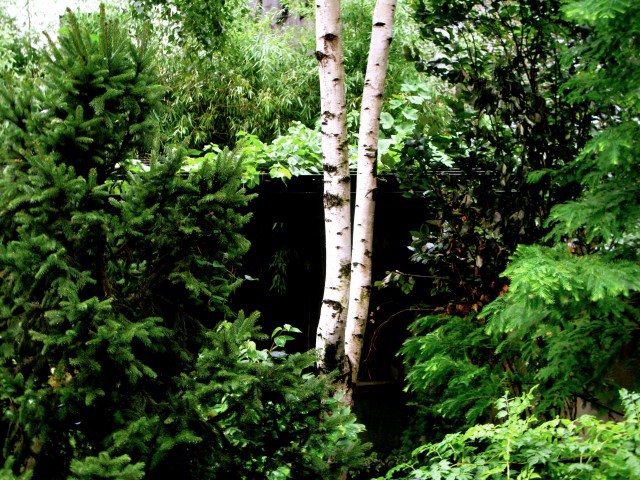
If, like me, you garden at ground level in a light-challenged, urban backyard — basically the equivalent of a mineshaft — you’ve probably found yourself confronting the end of July and August as something like a mid-life crisis. The garden isn’t unhealthy; except for a few brown spots here and there, caused by the heat or some pests, it’s probably lush and green, a sight your younger, pre-garden self would have imagined with pride as you considered the long odds of having any kind of outdoor space in Manhattan. Yet logic aside, the landscape in front of you seems to lack an element of excitement that once made the venture so utterly absorbing.
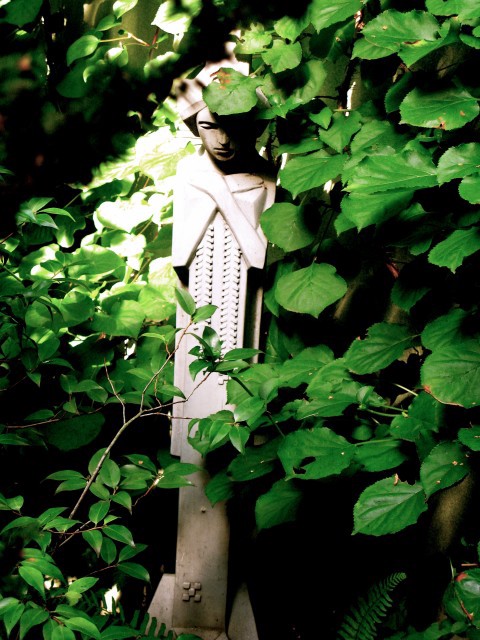
Adrift in the summer doldrums, you might long for the exuberance of spring or at least the calming resignation of fall. Or you might second-guess past decisions: What exactly were you thinking when you planted 23 trees in a 300 square-foot space? And why did you put the birch right in the middle, effectively monopolizing the sun and cruelly leaving everything else on the ground starved for light? Are you doomed to spend the rest of your life with ferns, hostas, and maybe some variegated ivy? Must you content yourself with delicate rumination and shadowed melancholy when you would trade it all for a few seconds of transcendent, arena-rocking bliss (botanically speaking)? You will consider ripping everything out and covering the entire yard with a slate patio on top of which two large cement urns will each contain a weeping Serbian spruce not less than 25 feet tall and not more than 4 feet wide. In your mind, it is a severe but elegant and possibly glamorous solution. Here is a garden that could measure up to the ones you have pondered in the glistening pages of the books on your shelves. Or perhaps you will go for something more rustic and serene, the English cottage effect, where butterflies and hummingbirds cavort among the flowering clumps of perennials.
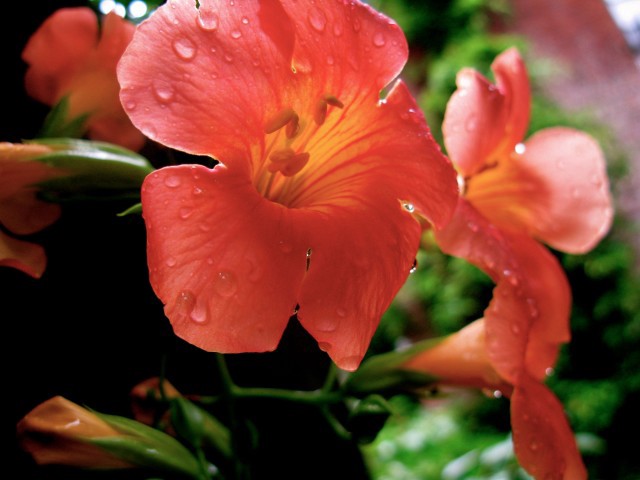
Thankfully, you will not cut down your beloved trees, but instead will work within the confines of your architecture. Maybe you can’t grow fields of lavender or blood-red coreopsis, but if you plan ahead, it’s very possible — as my partner Stephen and I did a few years ago — to plant a crossvine (Bignonia capreolata) and to train it up over a wooden pergola, where it can now get plenty of mid-summer light. Granted, the pinkish, pale-orange flowers are not exactly a blistering revelation of color, but they add a nice contrast to the garden at a period when it’s needed most. Like its close relation the trumpet vine, the bignonia can be invasive, so you’ll definitely want to keep an eye on it, though in a small garden, it’s not difficult to keep even the most aggressive vines under control.
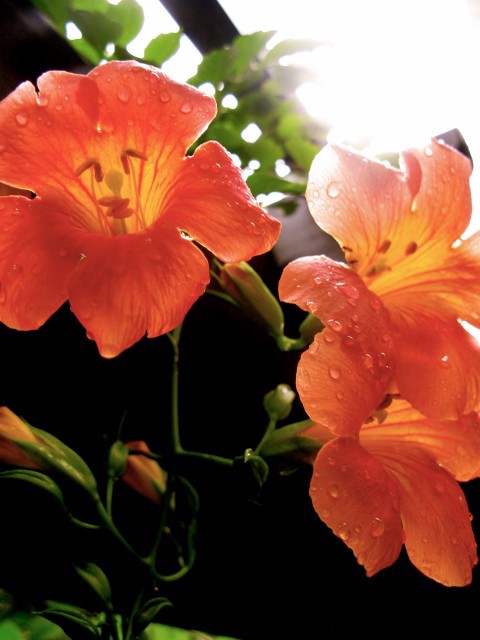
A less invasive option is a summer clematis. We grew ours (“Snow Queen”) up through the branches of our Norway spruce, which for the first time this year is dotted with gigantic, purple, triptastic blooms, a perfect antidote for the green malaise. Though you may be offended by the sight of vines running wild through an evergreen, rest assured that the clematis (at least this one: do you research before you plant) will not harm the tree. The visual discomfort should also inspire you to keep the rest of your garden tidy and under control.
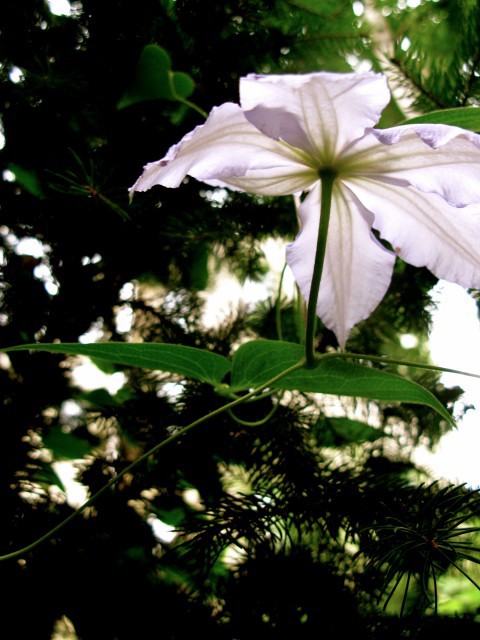
Finally, pots of annuals are always an option. Even a few standard-issue varieties — the sort you find at big-box stores — can help guide you through the end of the summer. Or, again, if you plan ahead, you can grow more interesting ones from seed. This year, I grew a batch of cosmos sulphureus from seeds sent to me from Italy (by way of Japan) by a Tumblr friend who’s the caretaker/gardener of a medieval castle. (A fact you will not want to consider in your cube at work when you are dealing with a non-garden-related mid-life crisis.) I just scattered the seeds in a pot, covered them with a little dirt, and now, two months later, they’ve grown up and are blooming like crazy. Jackpot.
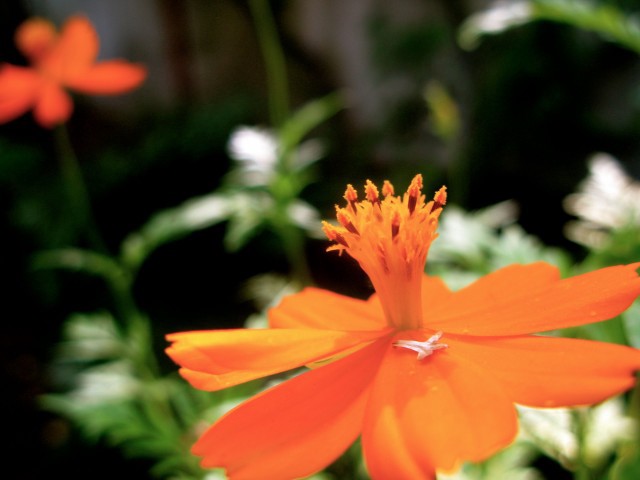
The orange cosmos are a particular source of pleasure for me because ten years ago — in complete violation of the Biblical commandment “Thou shalt not covet thy neighbor’s cosmos sulphureus” — I unsuccessfully tried to steal a few from my neighbor. Feeling guiltier than I cared to admit, I placed them in a discreet spot behind some grape vines that was far too shady for the plants to thrive and so the burglary was for naught. My neighbor had planted his yard with sod — grass (which: ugh, no) — and questioned why I was working so hard to plant trees and shrubs and perennials, when, in his opinion, pots were the way to go. I really hated him when August rolled around and one of his pots was filled with these lovely, orange flowers, while my yard was a torporific swamp of green. He never even watered, which meant the poor flowers would regularly wilt to the verge of death but spring up as soon as it rained or I took pity on them and hosed them down. I had no idea they were cosmos, either, since for some reason all of the cosmos I found online at the time were yellow and double-flowered — almost like a marigold — which did not appeal to me, and of course I was too proud or ignorant to ask my neighbor what was in his pot.
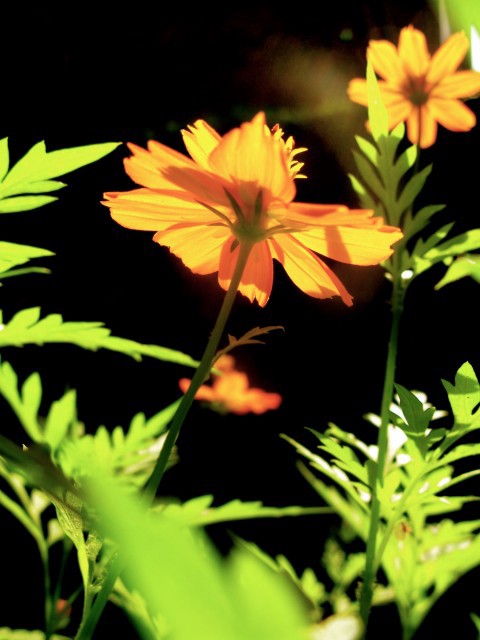
Though not exactly perennials, the cosmos will reseed themselves, as I can attest from having seen my neighbor’s pot thrive for many years before succumbing to drought one year when I was away. For the record, I now get along much better with my neighbor, now that I’m older and can recognize the wisdom of his words. Or well, a few of them.
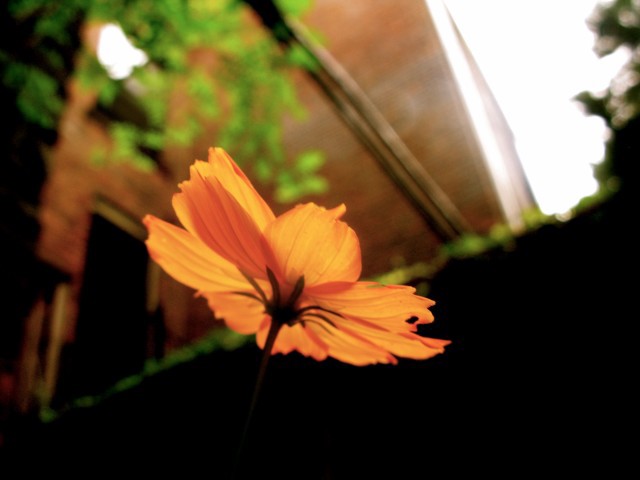
Matthew Gallaway is the author of The Metropolis Case: A Novel.
